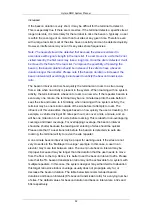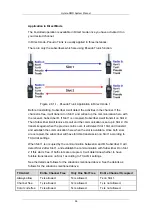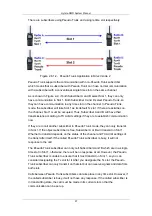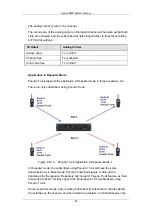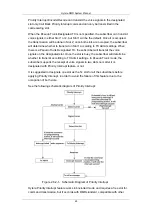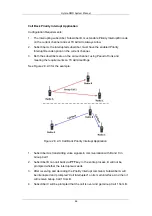
Hytera DMR System Planner
51
Please note that the above RSSI thresholds assume the outbound and inbound RF
coverage of the system is balanced. In other words, when the terminal is within good
outbound coverage of the repeater, the terminal’s inbound transmission can reach
the repeater. As the roaming algorithm uses outbound transmission to decide when
to roam, the terminal cannot roam in an unbalanced system even though it cannot
reach the repeater. In this way, the transmission from the terminal cannot reach the
repeater and so cannot be repeated.
The solution to this problem is to reduce the outbound TX power of the repeater, so
as to shorten the outbound coverage. In this way, the terminal can send successfully
as long as it can receive successfully. If reducing the outbound TX power is not
desirable, set the RSSI threshold to a value higher than the recommended one, to
force the terminal to roam even within good signal coverage. The threshold may be
different for portable terminals and mobile terminals because they have different TX
power and therefore different inbound coverage. The portable terminal may need a
higher RSSI threshold than the mobile terminals.
Please note that each roam list is configured with a threshold value. This means if
unbalance exists in one site rather than in the other site, it may be difficult to find an
appropriate threshold value for both sites.
2.7.3 Setting Beacon Duration and Beacon Interval
If no activity is present in the system, the repeater will go to the sleep state. In this
case, the terminal cannot detect signal strength via auto site roaming, preventing
from selecting the strongest site. For this reason, the repeater should be configured
to send beacons when no activity or interference is present in the system. During
such period, the terminal decides when to roam in accordance with the strength of
the beacon. If it does not receive any beacon within a predefined period, it will
suppose that it is out of the coverage and start roaming.
The beacon duration and beacon interval are configurable via the CPS. The former
can be configured in the repeater only, while the latter can be configured in the
repeater and the terminal.
The beacon duration depends on the number of sites in the system and therefore in
the roam list, while the interval depends on how quickly the terminal roams to
another site.
The ratio of the beacon duration to the beacon interval equates to how often the
repeater transmits (i.e. beacon transmission ratio) in the case of no inbound
activities. This ratio is not configured for the system directly, but it is an important tip
for setting the beacon duration and beacon interval. On a shared frequency, the
transmission ratio for beacons should be kept low (target ratio: 5%-10%). In other
words, the beacon interval should be increased accordingly if the beacon duration is
Summary of Contents for PD70X Series
Page 1: ...DMR System Planner ...
Page 2: ......
Page 4: ...Revision History Version Date Description Remarks R1 0 November 21 2012 Initial release ...
Page 126: ...Hytera DMR System Planner 122 Figure 1 4 Analog to digital Conversion 2 ...
Page 174: ...Hytera DMR System Planner 170 For your notes ...
Page 178: ...Hytera DMR System Planner 174 For your notes ...
Page 181: ......
Page 182: ......
















